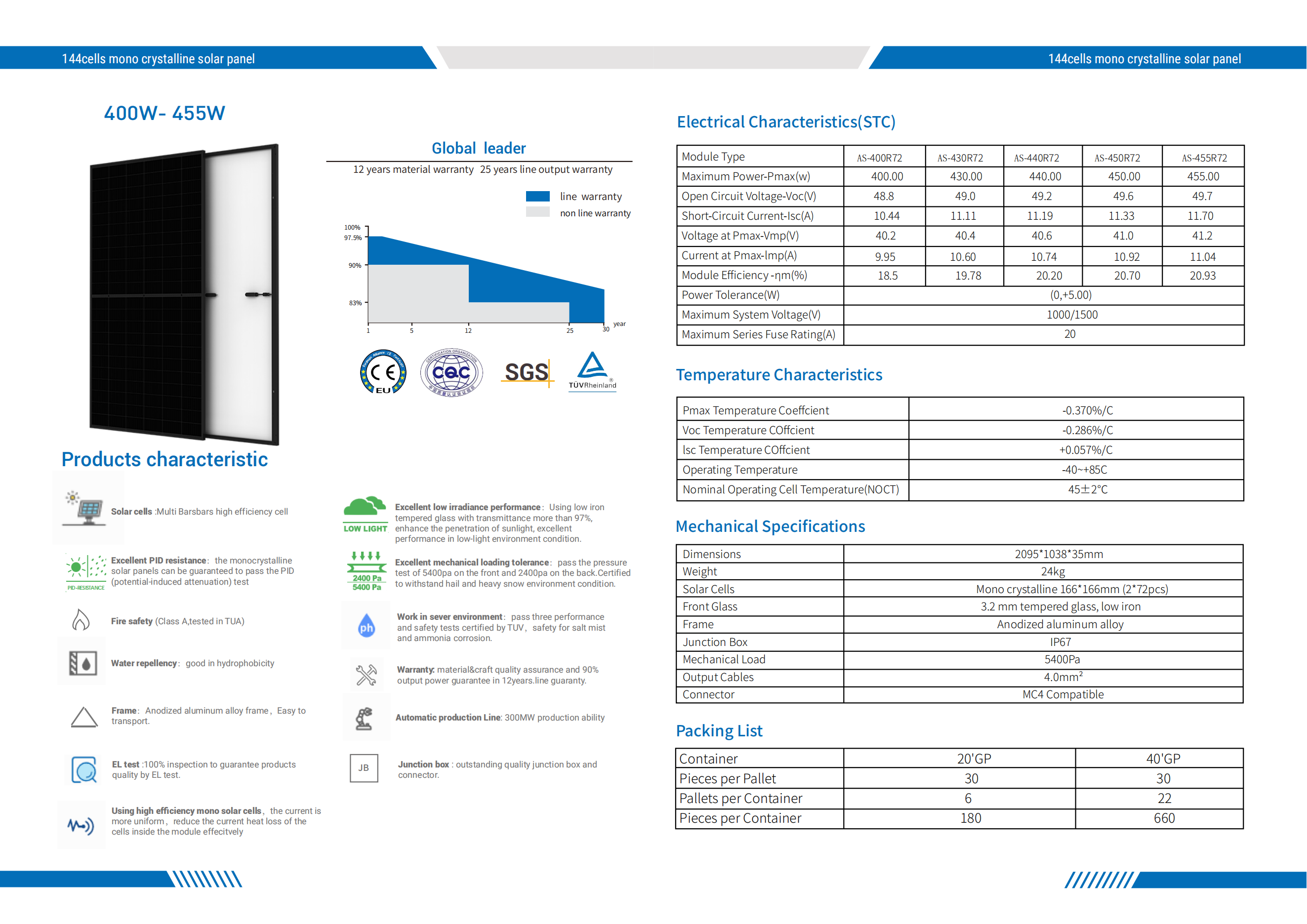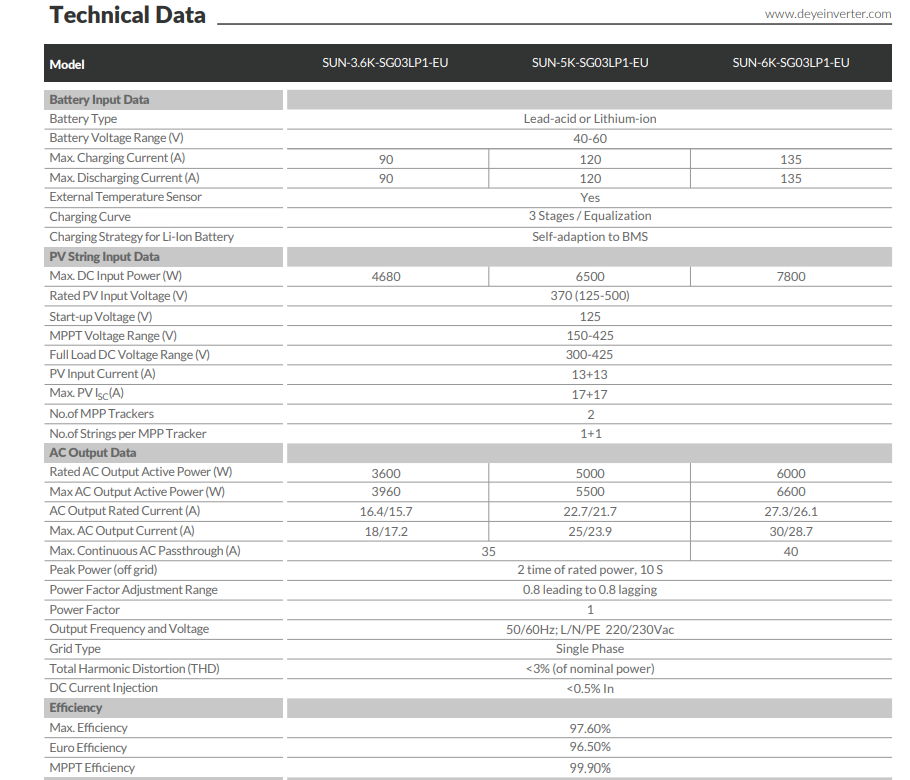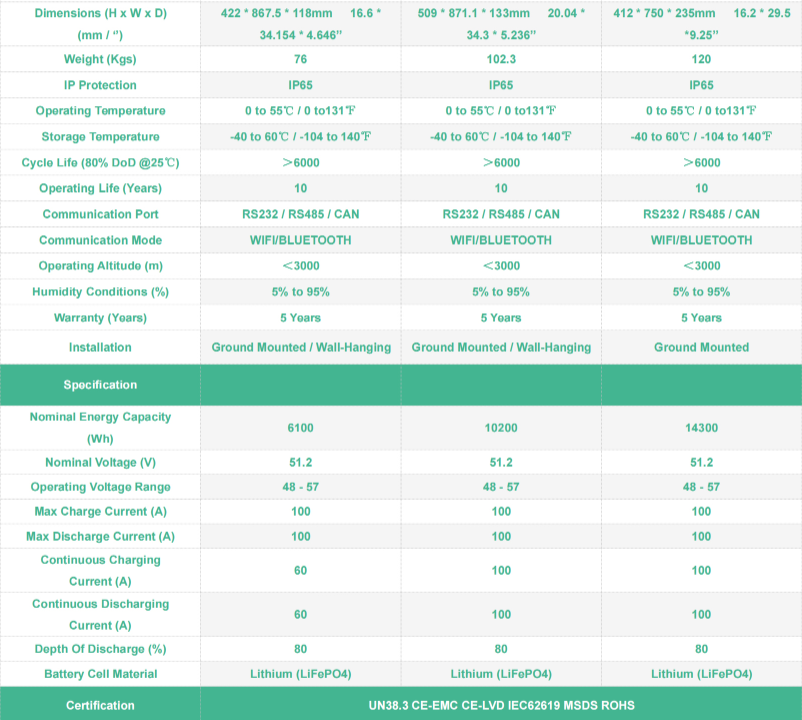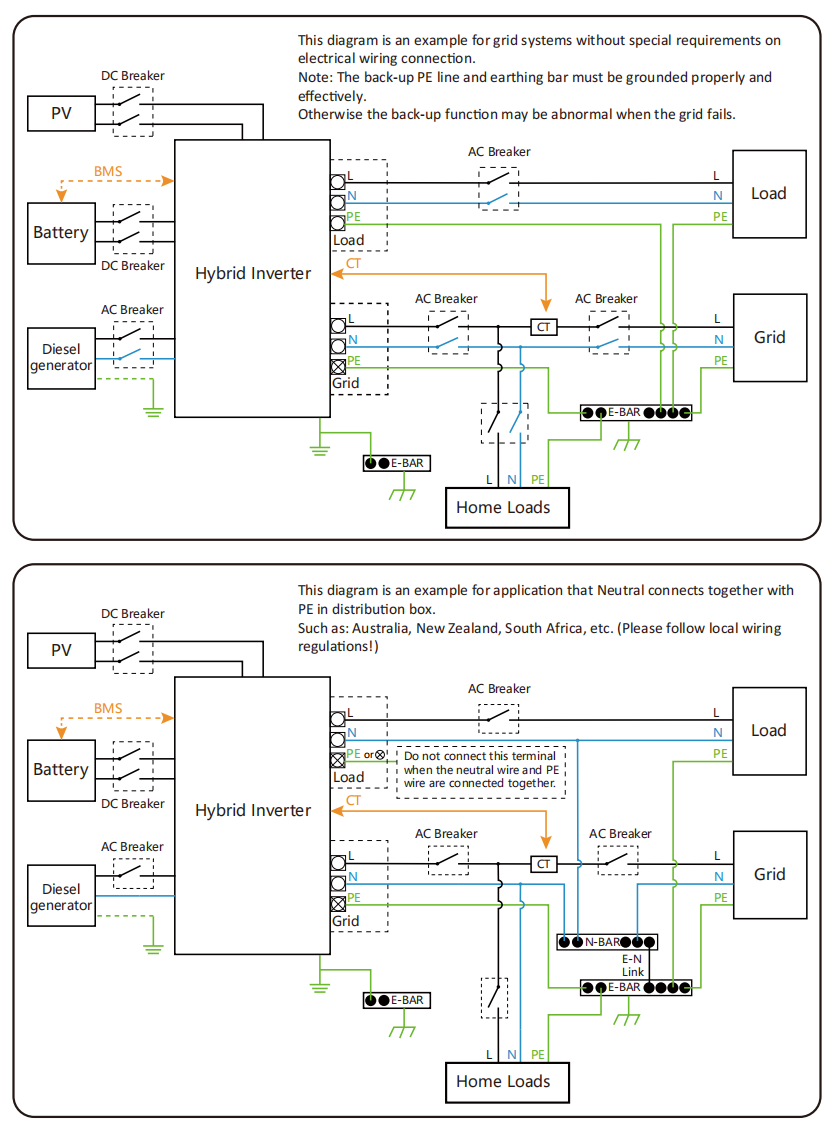01
Design selection stage
—
After surveying the house, arrange the photovoltaic modules according to the roof area, calculate the capacity of the photovoltaic modules, and at the same time determine the location of the cables and the positions of the inverter, battery, and distribution box; the main equipment here includes photovoltaic modules, energy storage Inverter, energy storage battery.
1.1 Solar module
This project adopts high-efficiency mono module 440Wp, the specific parameters are as follows:
The entire roof uses 12 pv modules with a total capacity of 5.28kWp, all of which are connected to the DC side of the inverter. The roof layout is as follows:
1.2 Hybrid inverter
This project selects deye energy storage inverter SUN-5K-SG03LP1-EU, the specific parameters are as follows:
This hybrid inverter has many advantages such as exquisite appearance, simple operation, ultra-quiet, multiple working modes, UPS-level switching, 4G communication, etc.
1.3 Solar Battery
Alicosolar provides a battery solution (including BMS) that matches the energy storage inverter. This battery is a low-voltage energy storage lithium battery for households. It is safe and reliable and can be installed outdoors. The specific parameters are as follows:
02
System installation stage
—
The system diagram of the entire project is shown below:
2.1 Working mode setting
General model: reduce dependence on the grid and reduce power purchases. In general mode, photovoltaic power generation is given priority to supplying the load, followed by charging the battery, and finally the excess power can be connected to the grid. When the photovoltaic power generation is low, the battery discharge supplements.
Economic mode: suitable for areas with a large difference in peak and valley electricity prices. Select the economic mode, you can set four groups of different battery charge and discharge time and power, and specify the charge and discharge time, when the electricity price is low, the inverter will charge the battery, and when the electricity price is high, the battery will be discharged. The power percentage and the number of cycles in a week can be set.
Standby mode: suitable for areas with unstable power grids. In backup mode, the battery discharge depth can be set, and the reserved power can be used when off-grid.
Off-grid mode: In the off-grid mode, the energy storage system can operate normally. The photovoltaic power generation is used for the load and the battery is charged in turn. When the inverter does not generate power or the power generation is not enough for use, the battery will discharge for the load.
03
Application Scenario Expansion
—
3.1 Off-grid parallel scheme
SUN-5K-SG03LP1-EU can realize the parallel connection of the grid-connected end and the off-grid end. Although its stand-alone power is only 5kW, it can realize off-grid load through parallel connection, and can carry high-power loads (maximum 75kVA)
3.2 Photovoltaic Storage and Diesel Microgrid Solution
The optical storage diesel micro-grid solution can be connected to 4 power sources, photovoltaic, energy storage battery, diesel generator and grid, and is currently one of the most complete and reliable power supply solutions available; In the waiting state, the load is mainly powered by photovoltaic + energy storage; when the load fluctuates greatly and the energy storage power is exhausted, the inverter sends a start signal to the diesel, and after the diesel heats up and starts, it normally supplies power to the load and the energy storage battery ; If the power grid is working normally, the diesel generator is in the shutdown state at this time, and the load and energy storage battery are powered by the power grid.
Note:It can also be applied to the scenario of optical storage and diesel without grid switching.
3.3 Home optical storage charging solution
With the development and popularization of the electric vehicle industry, there are more and more electric vehicles in the family. There is a charging demand of 5-10 kilowatt-hours per day (according to 1 kilowatt-hour can travel 5 kilometers). The electricity is released to meet the charging needs of vehicle, and at the same time relieve the pressure on the power grid during peak hours of electricity consumption.
04
Summary
—
This article introduces a 5kW/10kWh energy storage system from the design, selection, installation and commissioning, and application expansion of household energy storage power stations. Application scenarios. With the strengthening of policy support and the change of people’s ideas, it is believed that more and more energy storage systems will appear around us.
Post time: Aug-22-2023






